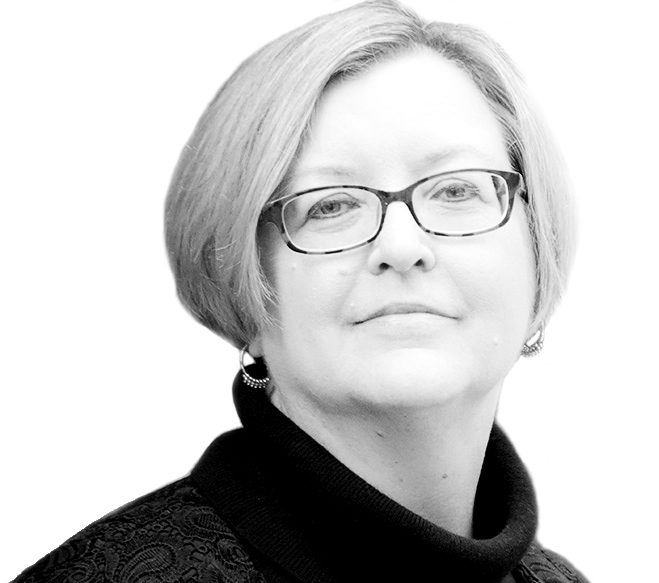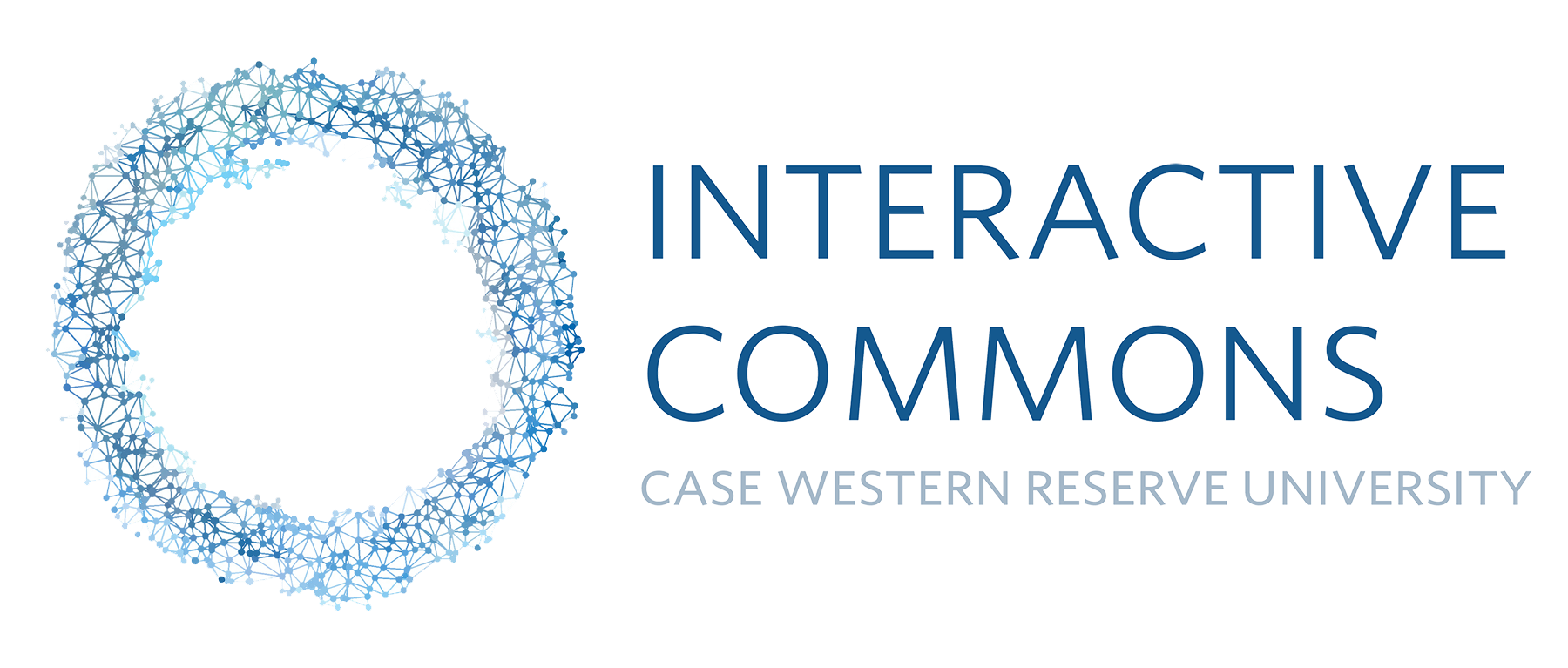"When entering the church, I was immediately taken aback by the beautiful patterns, colors, and illusory elements that covered nearly every inch of the Red Monastery. The size and scale of the church is much larger than I had envisioned, which is made apparent from first glance at the monumental archway through which we entered."
ELLE HAAG, BA candidate
The class was using an extended reality (XR) application designed and built by the Interactive Commons (IC) at CWRU as part of the first wave of expanded XR programming at the university.
When Dr. Bolman came to CWRU to chair the Art History department, she had a priceless asset on hand: a complete set of laser scans of the newly restored 5th-century Byzantine church. Everyone told her to call up Dr. Mark Griswold & Erin Henninger at the IC to talk about making a holographic experience to use in class — “So we all had lunch, and it was just suddenly like, ‘Okay well let's see... semester after next, let's schedule it.’”
“Having studied the Red Monastery with Dr. Bolman for almost two years, I believed that I understood the monument, but it was not until I visited the site in HoloLens did I know what it was like to be enveloped by the paintings and architecture.... It was not until I entered the space myself that I fully understood that the Red Monastery is a true garden of paradise in the desert.”
SYDNEY SLACAS, JD, MA in Art History candidate
The church was more than 1,500 years old when Dr. Bolman's multinational conservation team first stepped inside. The building had certainly benefited from the dry desert climate, as well as other direct and indirect means of preservation, like the layers of soot from liturgical action (incense, candle smoke) that coated the interior in a thick blanket of built-up grime. Over the centuries, the monks had also constructed temporary mud brick walls to bolster the church against earthquakes, which were common in the region.
For two decades, the team worked on the church. They pulled back the temporary walls and removed the soot from every surface, and what they found underneath was extraordinary: a “riotous” display of jewel-like paintings, covering floor to ceiling of the three-part basilica.
"We think of Greek and Roman architecture as having been white or green-colored, and it wasn't — it was painted on the inside and the outside…. Until we found this church, there was no interior space from the Greek, Roman or early Byzantine worlds that actually could give us a sense of what it looked like in paint."
DR. ELIZABETH S. BOLMAN, Professor of Art History
The process of transforming the laser scan data into the extended reality experience was more complicated than expected. First off, the amount of data was enormous: there were “billions of data points” that could be used to create the digital twin. The model needed to be built to scale, and with an incredibly high level of detail to meet the learning objectives — for students to have an “embodied experience in the church and a sense of proportion in relationship to (one)self,” as Dr. Bolman put it.
After a few weeks of all hands on deck, many meetings and run-throughs, the IC development team passed off the completed app and HoloLenses to Dr. Bolman for the first class. One request: the students should take off their shoes.
“I am very bad at compiling all the drawings, laser scan images, photographs, and ground plans into a composite image. I had too much information and I could not imagine myself standing in or exploring the Red Monastery Church. That all changed with the HoloLens experience, I can now truly envision the space around me when I close my eyes.”
BRENNA CARBONE, BS in Biomedical Engineering '21
It was Dr. Griswold's idea, as Dr. Bolman put it, “To make us treat the simulation like it was the actual church.... He didn't want the students just going crazy because of the tech. He wanted them to experience the church as a church in a reverential way.” So no shoes, as would be required in an actual Coptic monastery. Other sensory elements rounded out the environment, like music and lighting. There was a dash of "only in extended reality" magic added, too, like a real candle that seemed to light the hologram.
When the students saw the candlelight, Dr. Bolman said, “They started gasping, because they saw it materialize around them.”
And then there was the elevator.
"The most important aspect of the HoloLens experience was a sense of perspective that one simply cannot get from reading and pictures alone. To be able to stand in the center of the monastery and see the architecture and painting as intended brings things to light that are otherwise almost impossible to understand."
JACK FECZKO, BA in Biochemistry '21
When Dr. Bolman pressed the "elevator button" on her hand menu, the entire group ascended to a higher level of the church. Once there, students could see the upper paintings and illusory architectural elements (e.g., flat walls painted to look like columns) up close. This would have been an impossible perspective for a tourist, but actually became a nostalgic moment for Dr. Bolman, who did spend many hours up on scaffolding, staring face-to-face at those paintings —
"It was really wonderful for me to be able to get close to them again, it was deeply meaningful.... That's one of my homes, so I felt like I was in my home again, in a way."
"Equipped with the HoloLens, I was able to examine the Red Monastery Church’s apse in relation to my own body, to those of my classmates, and, perhaps most significantly, in relation to other parts of the space.... the general became the specific, the idea became the experienced."
REED O'MARA, PhD in Art History candidate
There was one aspect that was particularly meaningful for the students, especially on the heels of a year spent isolated from one another — they were together as a group, making discoveries, and sharing them with each other. Graduate student Shayla Croteau called it, “A welcomed sense of awe that I have not experienced much since the recent transition to online life.” Not only was the time spent together a balm, but it led to some amazing discoveries. Two students, piggybacking off of one another's ideas, noticed a pattern that not even Dr. Bolman had seen in her 20 years in the church — a triconch within a triconch depicting the holy trinity.
When it was all over, Dr. Bolman said that no one wanted to leave — “I finally said, ‘Okay, well it's quarter past. Thank you all, this has been great…’ and then one of them said, ‘We can't just stop like that!’ Then another one said, ‘We have to have a ritual.’ It took my breath away." Mirroring the way they entered the space, the students lined up, walked around in a circle, and exited while Coptic liturgy music played in the background. Then they put their shoes back on.
"Experiencing the Red Monastery Church through the HoloLens technology not only made me more knowledgeable, but made me feel as though I had taken a pilgrimage."
JESSICA LONG, MA in Art History candidate
Students came away from the experience asking, “Why aren’t we doing this for every monument ever?”
Dr. Bolman agrees.

